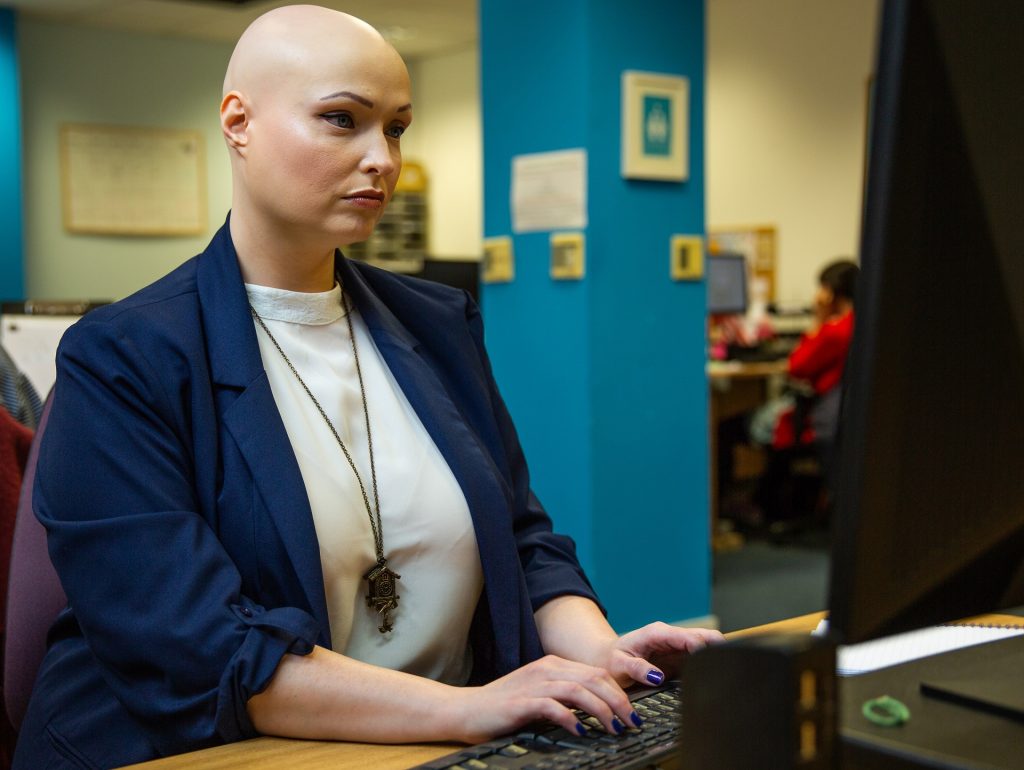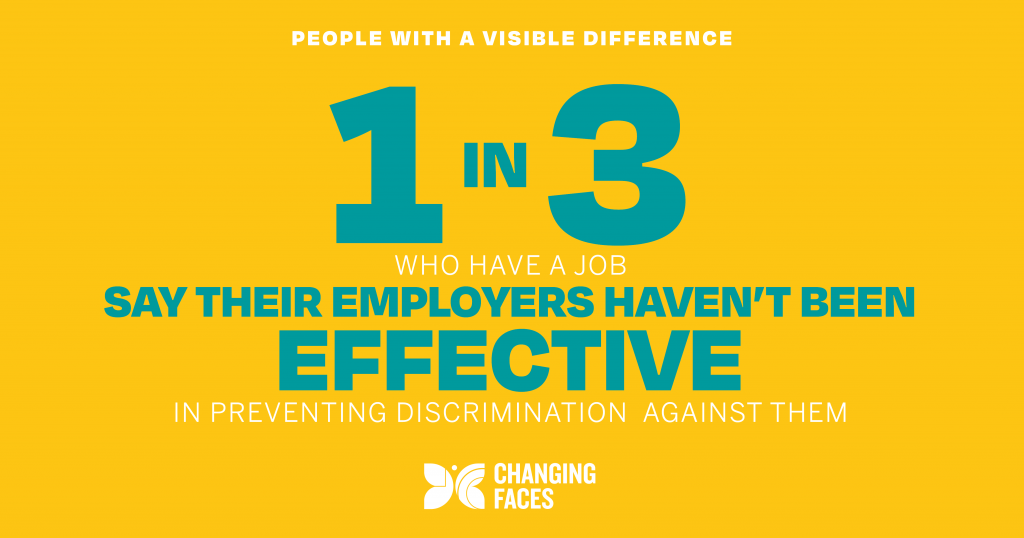Many people with a visible difference feel excluded at work because of the way they look. According to our My Visible Difference report, over a third (34%) of people who identify as having a visible difference say that their employer has not been effective in preventing discrimination against them in the workplace.
To mark National Inclusion Week this week, here are four ways employers can help people with a visible difference:
Read our new guide to help employers improve their recruitment processes
This guide will prepare recruiters and interviewers to provide a fair and equal recruitment process when an applicant or candidate has a scar, mark or condition which affects their appearance.

Brenda, who has alopecia universalis: “Sometimes at work, I would have to fake confidence in order to get the job done, when really I didn’t want to leave my room.”
It outlines legal considerations and will help you ensure good practices can be adopted throughout your organisation.
We’ve also produced a guide for jobseekers which looks at similar questions and concerns from their perspective.
We want people who look different to be represented across mainstream culture and to have the freedom to express themselves.
Download the My Visible Difference In The Workplace resource pack
Millions of people across the UK identify as having a visible difference such as a mark, scar or condition that affects their appearance. While we have seen some positive changes, many people with a disfigurement still face isolation, discrimination and hostility. By getting people talking about looking different in the workplace, we can break down stereotypes, improve relationships, and take the stigma out of something that affects us all.
This pack has tips, ideas and resources to help get your workplace involved and start the conversation. Download the workplace resource pack (PDF 98KB)
Take the Face Equality test
Every one of us has ‘unconscious bias’, where we hold less favourable ideas about certain groups of people. Implicit Attitudes Tests, developed by social psychologists at Harvard University, can be used to test levels of bias.

Sign Pledge To Be Seen
It’s time for people with visible differences to be seen and heard. That’s why we’re calling on companies and brands to sign up to Pledge To Be Seen to represent more people with a visible difference in their campaigns over the next year.
We want people who look different to be represented across mainstream culture and to have the freedom to express themselves. We want everyone to have a real choice when it comes to the brands they buy and the companies their work for, and to see themselves reflected in both advertising and the workplace.
Read more about Pledge To Be Seen and how you can sign up.
Are you an employee with a visible difference?
If you feel discriminated against at work because of your visible difference, or work is making you feel anxious because of how you look, head over to our new self-help materials where we have a series of guides on coping with your visible difference at work.